#piebald cob
Text
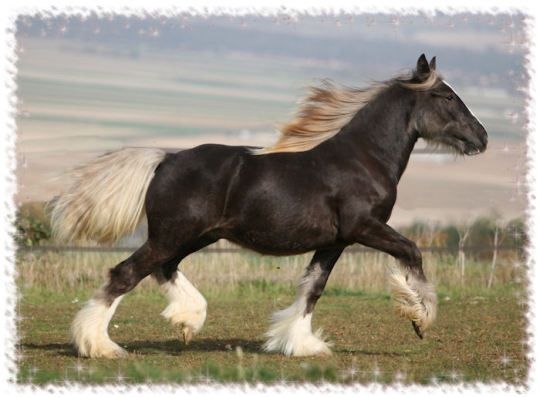



꧁★꧂
#horse#sparkles#farm#field#horse girl#gypsy cob#france#irish cob#palomino#stallion#colt#clydesdale#piebald#paircui#buckskin#fluffy#flickr#oldweb#old web
753 notes
·
View notes
Text
man I keep dreaming about riding again, I miss it ;-;
#I used to loan a horse called Bob#horse loaning is basically someone has a horse > you pay to share it and care for it and ride it essentially#it varies but in my case he was essentially fully my boy#he was a piebald cob and he was so sweet and gentle#I felt so safe with him#sadly he got a severe leg injury and the original owner had to put him to sleep :(
4 notes
·
View notes
Video
Megastar Foal 1week by Danni Showers
Via Flickr:
Such a cheeky little fella! He was having a great time hooning around. Much to his dam's stress!!
32 notes
·
View notes
Text
van der linde gang as horse breeds
i love drawing horses so i decided to draw all 24 of the rdr2 gang members as horses. i tried to tie the breed or coat to their character in some way (personality or looks) but some were purely random. i don't really explain my reasoning in this post because i am tired but comment or flick me an ask if you want me to explain.

Dutch - Cremello Thoroughbred
Hosea - Bay Clydesdale
Arthur - Buckskin Quarter Horse
John - Grulla Blanket Appaloosa
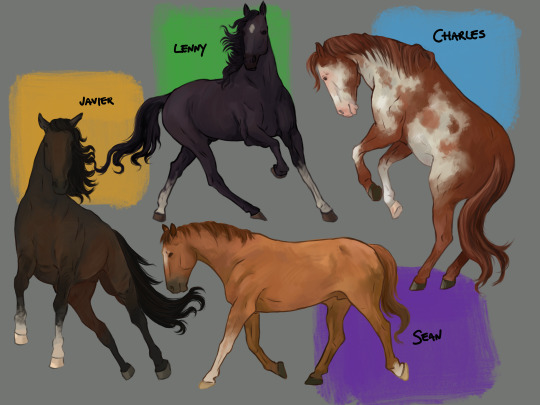
Charles - Brown Overo American Paint Horse
Sean - Chestnut Irish Draught
Lenny - Black Tennessee Walking Horse
Javier - Dark Bay Andalusian

Sadie - Palomino Mustang
Karen - Rose Gray Hanoverian
Tilly - Sooty Buckskin Morgan Horse
Mary-Beth - Black Friesian
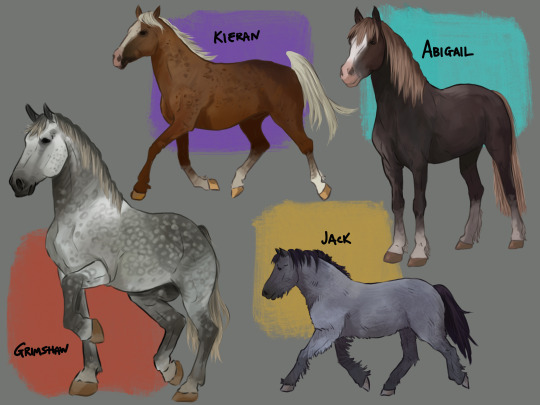
Abigail - Liver Chestnut Flaxen Welsh Cob
Jack - Blue Roan Dartmoor Pony
Kieran - Chocolate Palomino Connemara Pony
Grimshaw - Dappled Grey Percheron

Bill - Red Roan Belgian Draft
Uncle - Gray Donkey
Pearson - Sorrel Sufflock Punch
Strauss - White Lipizzan
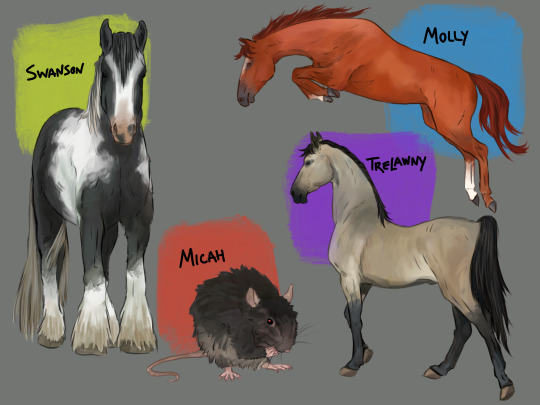
Molly - Red Chestnut Selle Francais
Trelawny - Silver Buckskin American saddlebred
Swanson - Piebald Gypsy Vanner
Micah - rat (pretty self explanatory)
13 hours later and it's done yay!! if you'd like to support me my ko-fi is linked on my profile and i also have commissions open. please enjoy and pray for my posture. i think i might continue this series but with a general animal theme instead of just horses.
73 notes
·
View notes
Text
lord of the rings actually has good horse casting and here’s why
there are four horses with significant screen time in the trilogy: bill, the hobbits’ pack pony; brego, ridden by aragorn; asfaloth, ridden by arwen; and of course shadowfax of the mearas. asfaloth and shadowfax are of course played by andalusians, the classic “movie star” horses, usually grey or white with a powerful but graceful build and beautiful flowing manes. however i can’t really be mad about it because asfaloth is an elven horse so who knows what magical rituals they are using to keep him shining white…and his colour is also important visually in the flight from the nazgul (all of whom ride black horses). shadowfax is also literally a magical horse and needs to stand out visually, plus he is described in the book as a pure white stallion. basically, having the two horses that are associated with magic be stunningly beautiful and well groomed just makes sense ok
bill and brego are casting choices that i think could have been improved but i understand why they did what they did. bill is actually not played by a pony at all but by a quarter horse, which are usually around 15hh and sturdily built. he doesn’t really look like a pony, but the reason they did it is actually pretty obvious: so that he would be proportionate to the actors playing the hobbits. letting his mane grow out long was a good choice for making him more rustic and pony-like. brego, like all the horses of rohan, is kind of problematic to me, because the vast majority of them are tall, sporty-looking warmbloods which is a horse type that has literally only been developed over the past century or so, as people have a) got taller and b) demanded their horses be more athletic (a tall, lightly-built horse is generally physically capable of jumping higher, for example). rohan is largely based on saxon civilisations, and there is no doubt that their horses were smaller, stockier and much hairier than any of the horses in the movie. HOWEVER, Viggo mortensen is 6’4”, and clearly needed a horse that he wouldn’t look too tall for. i can kind of excuse the horses of the rohirrim looking a bit fancier since they are essentially the king’s guard, but it still doesn’t excuse the complete lack of draft horses and farm horses in rohan.
some other details that i like: all the horses are solid colours. while i wouldn’t mind seeing some piebald/skewbald cobs, especially in the shire, piebald and skewbald horses in the battle scenes would be a complete deal-breaker for me. unless they were full-on vanners (which would be awesome btw) it would give the movie way too much of a western feel, especially i think to american audiences who associate that colouring with paint horses (= american breed, and there is no equivalent of the quote unquote “new world” in tolkein). i also like that legolas’ horse, arod, is a percheron cross!!! those kinds of shorter but extremely solidly built draft horses are perfect for the setting imo. finally, really minor detail but one that i like a lot: eomer’s horse, firefoot, is an iron grey. this is a colour that very rarely lasts throughout a horse’s life, as they tend to lighten very quickly with maturity. this means that firefoot appears to be a young horse, which i think really works for eomer’s character as this fiery young heir to the throne (and also as an excellent horseman)!!!
hope you enjoyed this pointless analysis peace and love on middle earth
22 notes
·
View notes
Photo
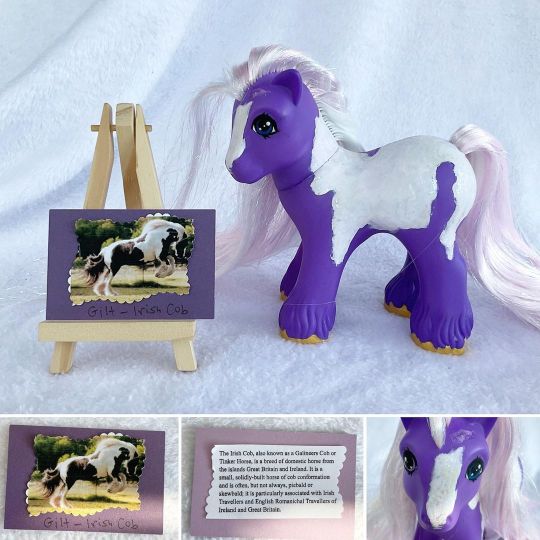
Today is the final pony of the What If pony rainbow, Gilt the Irish Cob! I’ve always wanted to make a brightly colored pinto, and I ended up making a purple piebald instead! 🤣 This handsome lad is based on a horse I’ve often seen called a Welsh Cob or Vanner, but all of the references online called them Irish Cobs! I added some glitter to the edges of his white markings to brighten them up, and he has heterochromic eyes - lavender and blue! I love his blaze which trails down into his little lip markings, and his gold hooves! Those were super fun to add! ✨ Gilt is created from a white @hqg1c bait that I dyed! #ponygurucustom #mylittleponyfair #ponyfairwest #mylittlepony #mylittleponycustom #mlp #mylittleponybigbrother #purple #mylittleponycustomizer #hqg1c #customtoy #mylittleponyg1 #mlpg1 #mylittleponyfair2022 https://www.instagram.com/p/Cidx_-cJgYR/?igshid=NGJjMDIxMWI=
#ponygurucustom#mylittleponyfair#ponyfairwest#mylittlepony#mylittleponycustom#mlp#mylittleponybigbrother#purple#mylittleponycustomizer#hqg1c#customtoy#mylittleponyg1#mlpg1#mylittleponyfair2022
18 notes
·
View notes
Link
I don’t see it….do you?
10 notes
·
View notes
Photo

New Post has been published on https://horsetoloan.com/horse-breeds/gypsy-horse-breed-gypsy-vanner/
Gypsy Horse Breed Gypsy Vanner

Gypsy Horse Breed – The Gypsy Vanner
The Gypsy horse, or the Gypsy Vanner, is a breed of horse that hails from Great Britain and Ireland. They are recognizable for their white splashes and were bred and used by the Irish Travelers as well as the English Romanichal Travelers.
This is what gave the breed their name! Gypsy Vanners were often— and still are— used to pull the traditional vardos, or wagons, of the Romani subgroup in the English Isles.
This is a fairly newer breed, especially when compared to some other breeds of horses that have been around for centuries. We will go over the Gypsy Vanner horse in more detail below, including its characteristics and history.
Gypsy Vanner Characteristics
When it comes to the defining characteristics of a Gypsy Vanner horse, they are most often piebald or skewbald colored. In addition, they have the conformation of a cob. The Gypsy Vanner is also called the Irish Cob, and are classified as being small draught horses because of their strong hindquarters. Gypsy horses have a flowing mane and tail and feathered legs, as well as having a general appearance of a heavy, powerful horse. The head of a Gypsy Vanner is sweet, which means it is without coarseness in proportion and fits the overall balance of the horse. Their bite should also be even.
Gypsy Vanner Size
The Gypsy Vanner breed stands at a height of between 13 and 15.2 hands high. However, these rules are not very strict, as the Gypsy Horse Association will accept heights outside of the aforementioned range, meaning that horses both smaller and larger may be accepted. When compared to other breeds of horse, the Gypsy Vanner height is considered to be average.
Among draft horses, this breed is considered to be small, especially when you take into account that the Shire horse can stand up to 18 hands in height! The Irish Cob, or Gypsy Vanner, is a horse characterized by a sturdy, broad, and compact body. They have dense bones and deep, powerful chests. The chest of the horse should show off ample muscles.
Gypsy Vanner Weight
Weight is not restricted by the Gypsy Horse Association for registrations. However, the breed does have an average weight, of course, and that average is between 1100 and 1700 pounds.
There are many registries across the globe for the Gypsy Vanner breed, and all accept different heights— this means that there is also a big weight range for Gypsy Vanner horses, as height and weight are proportionately linked in horses.
This is a breed that has dense bones, too, which therefore makes them heavier than the average light horse breed. The strong muscles and conformation of the Gypsy Vanner makes the breed heavy cob-type horses.

Gypsy Vanner Colors
Like with weight, the Gypsy Horse Association is not picky with colors, either. They accept all colors and markings of the Gypsy Vanner breed. There is even an old saying in the breed standard that is often mentioned by the registry.
It goes as follows: “A good horse never comes in a bad color”. Thus, the Gypsy Vanner is not a color breed, as some other breeds of horses are. They can be diverse in color, though there are some colorations or patterns that occur more often.
These most common colorations are piebald and skewbald. Both of these are characterized by white patches on dark coats, which is typical of Gypsy Vanners. Rarer colors that you may see the breed appear in are champagne, cremello, and palomino. They may be solid, tobiano, or splash-in patterns.
Gypsy Vanner Temperament
The Gypsy Vanner is a breed beloved for its temperament, too, and not just its many colors. They are well known for being kind and tolerant, as well as patient and intelligent. They have an agreeable nature which makes them a fantastic family horses. They can also be used as therapy horses due to their unflappable personality.
In addition to all of these characteristics, the breed is known for being tractable, sensible, and willing. A good Gypsy Vanner will have all of these important traits. These traits also make the Gypsy Vanner an adaptable breed that is able to participate in all of the equine disciplines. You could see a Gypsy Vanner in dressage, jumping, driving, and more!
Gypsy Vanner Care
If you give your horse the proper care and maintenance that it needs, it will be able to live a long and happy life. The Gypsy Vanner breed, for example, can live an average of 20 to 25 years if properly taken care of. It is also important to note that this is a breed that does have several care needs. The weight and the feathers of the horse are what needs the most care and attention, typically. That being said, the Gypsy Vanner is still considered to be an easy keeper among horses. We will go over the needs of the Gypsy Vanner in greater detail further in this article.
Gypsy Vanner Diet and Nutrition
Some horses have very demanding diets, while the dietary needs of other breeds are less so. As each breed of horse has a different build, energy level, purpose, and more, not all breeds will benefit from the same diet. The Gypsy Vanner breed is one that is a less demanding eater, especially when it comes to things like supplements.
They do need a bit more forage than the average horse, which is because of their conformation and weight. Horses of this breed will also need a variety of fresh hay, pasture, some grains and vegetables, and some fruits, too.
Draft horses, such as the Gypsy Vanner, are known to have economical metabolisms. This means that they are able to digest nutrients slowly and more efficiently. Draft horses can also be prone to obesity, which means that their grazing should be monitored carefully to avoid this.
Gypsy Vanner Health Issues
Like every breed of horse, there are some common health issues that can crop up with the Gypsy Vanner breed. That being said, this breed is overall a pretty healthy horse breed. The Gypsy Horse Association even notes that they are a sturdy and healthy breed. Hardy breeding has made Gypsy Vanners a breed that is good at jumping and swimming and is even able to carry heavy weights on its back.
They have strong conformations and can withstand many obstacles. However, one of the biggest health issues to be aware of is obesity. This is a health problem common with all draft breeds.
To avoid this, you should not overfeed your Gypsy Vanner and should also maintain a healthy diet. Gypsy Vanners can be prone to polysaccharide storage myopathy, or PSSM, and equine metabolic syndrome, or EMS, as well.
Gypsy Vanner Grooming
While the Gypsy Vanner horse does not have a particularly demanding diet, as we went over above, the required grooming of this breed is certainly more involved. One factor is the feathers on the horse’s legs. They are striking, but they do require more upkeep to avoid issues such as skin irritation or diseases. Most, but not all, of the Gypsy Vanner horses will have feathers.
Their feathers must be washed and dried every 3 to 4 days. If you do not do so, your horse may end up dealing with skin irritation or skin infections. In addition to caring for your horse’s feathers, you will also want to brush its coat every day with a body brush in order to remove any small particles or debris. A curry comb should also be used to get rid of more serious grease and dirt as well as to stimulate your horse’s blood flow.
Gypsy Vanner History
The Gypsy Vanner breed has not been around for very long, especially when compared to other breeds. Because of this, they do not have as much of a lengthy history. These small draft horses were used and developed by the English Romanichal and Irish Travelers. Below, we will go over the history of the Gypsy Vanner horse as we know it today.
Gypsy Vanner Origin
As we mentioned above, the Gypsy Vanner is a breed that originated in the British Isle and was used by the English Romanichal and Irish Travelers so that they could better travel through the Isles. However, the horses were not used by travelers until the later 19th century. Once they began to use the Gypsy Vanner horse, they used them to pull their vardos, or caravans, and then started to breed the horses to better fulfill this purpose. They bred the Gypsy Vanner horse to be the ideal caravan horse, using the Shire, Clydesdale, and British ponies such as the Dales to crossbreed for favorable traits.
Gypsy Vanner Historic Development
After World War II, the English Romanichal had the ambition and vision to create what they pictured to be the perfect caravan horse. This horse would be “a small Shire, with more feather, more color, and a sweeter head”, and this is what the original breeding goal was. Most of the steps of the selective breeding process were not documented to the outside world. It was not until two Americans by the names of Dennis and Cindy Thompson were traveling through the English countryside and came upon a breed of horse that was not known to them, grazing in the fields. The Thompsons went on to assist in creating the breed now known as the Gypsy Vanner. They did this by connecting with the English Romanichal and being the first to take the first of horses across the pond to the United States. The breed is still more common in Europe where they originated than in North America.
Notable Gypsy Vanner Horses
Gypsy Vanner horses were not known to the outside world for a long time, as we mentioned previously. This means that there was less time for horses of the breed to become notorious or famous. However, there are still some famous Gypsy Vanner horses that are worth mentioning! These horses have typically won competitions or hold records. Some Gypsy Vanner pedigrees are also notable as they have produced well-known horses.
The Gypsy King
The Gypsy King is a famous Gypsy Vanner horse who is a black and white tobiano stallion. He was famous for being the sire of 84 foals. He was also the first of the Gypsy Vanner stallions that the Thompsons imported to the United States, back in 1998. The Gypsy King is widely considered to be the most famous and recognized of the Gypsy Vanner breed, all over the world.
Birthday Boy King
Birthday Boy King was a Gypsy Vanner who was born on Cindy Thompson’s birthday. He is a striking black Blagdon stallion and lives at the Appleby equestrian center. He is also recognizable for the prominent blaze on his forehead, three stockings, and a sock. Birthday Boy King’s sire is The Gypsy King, another famous Gypsy Vanner horse. This means he is directly descended from the first Gypsy Vanner to step foot on US soil.
VV King William
VV William was a black and white tobiano stallion. He was born in 2007 and is 15 hands tall at his withers. He has sired approximately 35 foals, and his own sire was the legendary Gypsy Vanner stallion The Gypsy King! In addition, VV William has fathered many champion offspring. These champs include the likes of the Champion and Hall of Fame Stallion GG Lyuba’s King Zeus.
Gypsy Vanner Myths and Legends
Like with the history of the Gypsy Vanner and the notable horses of the breed, we do not know as much about Gypsy Vanner myths and legends, because they are still a fairly new breed of horse.
They were unknown to the outside world for quite a while. The legends that surround the breed mainly originate from the English Romanichal community. We will go over some of the details of the stories and myths that we do know further in this article.
Verbal History
It was not until the late 19th century that the first studbook of the breed was introduced. Instead, the breeding goals and the history of the Gypsy Vanner was passed down verbally in the English Romanichal and Irish Traveler communities. This is one of the main reasons that we do not know about the older history of the breed.
Ireland, not Great Britain
The Gypsy Vanner is a horse of many names, which can be confusing to some. For example, the breed is also known as the Irish Cob. There is a reason for this, though! The Gypsy Vanner originated from Ireland and not the UK, which is why the breed has these names. The Gypsy Vanner is the more commonly used name for the breed in the United States.
Fairytale Horse
The Gypsy Vanner, or Irish Cob, is a breed that looks particularly magical! On top of its magical appearance, there are also some beliefs that the breed is not just an ordinary horse. Locals in Ireland used to believe that these horses have a connection to fairies and leprechauns, and some do still believe this! The horses are also called Tinker Horses, and of course, we all know the fairy Tinkerbell of Peter Pan fame. Do you believe in magic, too?
Modern Gypsy Vanner Horses
The Gypsy Vanner was unknown for many years, and the outside world had no idea that they existed. These days, though, the breed has emerged to worldwide popularity. They are beloved for their temperament and unique appearance, too.
That being said, they are still a fairly rare breed. Gypsy Vanners can especially be found in the United Kingdom, Ireland, and the United States, often being used as family horses or pleasure horses. The kind temperament of the breed and solid conformation has made the Gypsy Vanner popular, and thus their breeding has increased in volume in past years.
Gypsy Vanner Breeding
The Irish Cob, or Gypsy Vanner, breed of horse began to grow in popularity in the United States. This, of course, was due to the interest of the Thompsons in the breed. The Gypsy Vanner has also increased its popularity in the breed’s home countries of the United Kingdom and Ireland. They are more common than ever and can now be spotted all over the countryside!
Due to the sweet and kind nature of the Gypsy Vanner, many families have a gelding of the breed on their farm or keep them as family pets. Most of those that own Gypsy Vanners these days are not nomadic, as the travelers who originally bred them are. Th Gypsy Horse Association still remains the original breeding goal of the English Romanichal.
Gypsy Vanner Population
As we have mentioned earlier in this article, the Gypsy Vanner is a fairly rare breed of horse, though it has become more common in recent years. It is estimated that there are around 10,000 horses of the breed across the globe today.
Of these 10,000 horses, 20% of them are selectively bred so that they can maintain the Gypsy Vanner breed standards. While there are not definitive numbers about the Gypsy Vanner population, it is estimated that 20% of the horses reside in the United States. Of course, the number of Gypsy Vanners is low in comparison to the number of some more populous breeds like the American Quarter Horse. This low number can be attributed to the relative newness of the Gypsy Vanner breed.
Gypsy Vanner Uses
The Gypsy Vanner is a particularly versatile breed, as according to the Gypsy Horse Association. In fact, they even say that the Gypsy Vanner or Irish Cob is “beyond doubt, the most versatile of animals in existence and long ago established a reputation as the best ride and drive animal in the world”. The gait of this breed is agile, powerful, and well-balanced.
All of this makes them successful dressage horses. Another trait of the breed is that they have a good depth of body and are suited for driving or riding. After all, the breed was used for pulling caravans, originally. Their kind temperament makes them good for any use. They are also naturally gifted jumpers and can even compete in jumping and dressage as a result.
Gypsy Vanner Prices
The price of a horse is commonly thought to be the purchase price, and while this is true, there are other costs associated with a horse as well. While there are different purchase prices for a horse depending upon certain characteristics, there are also additional costs that you will continue to pay for your horse’s lifetime. These include the cost of food and room and board, for example. Below, we will go over some of the numbers associated with owning a Gypsy Vanner horse.
Gypsy Vanner Purchase Price
The Gypsy Vanner horse can be more expensive than more common and popular breeds like the Thoroughbred or American Quarter Horse. Part of the reason for this is because of the low number of Gypsy Vanner breeders in the United States.
It is a classic case of supply and demand driving the cost up! The breed was only imported into North America a couple of decades ago, so the number of available horses is limited, therefore increasing the purchase price. On average, a Gypsy Vanner stallion will cost between $1200 to $25,000. A Gypsy foal, on the other hand, can cost as low as $120 if you were to purchase it in Ireland, where the breed is more populous.
Then, you would have to factor in import costs with the purchase price. Import costs to the states, for example, can be up to $7,500. A good Gypsy Vanner horse can cost between $3400 to $5400 on average, while a very high-quality Gypsy Vanner can cost around $25,000.
Some of the things that come into play here are how old the horse is and how well it is trained. Bloodlines are also important and can drive up the purchase price of a horse. For example, if the horse comes from champions, it will cost much more than a horse from a lesser bloodline.
Related Articles
Dutch Warmblood Horses
Belgian Horses
Frequently Asked Questions
How much do Gypsy Vanner horses cost?
The Gypsy Vanner horse breed is one that can cost more than some other breeds of horse when you look at the average purchase price. However, it is also important to remember that the cost of a horse is not limited to their purchase price.
There are certain costs that you will be paying throughout the horse’s lifetime, like their food, shelter, and medical needs. There are also different factors that affect the purchase price of a horse, and these include their bloodline, age, and training level.
Since the Gypsy Vanner is a rarer breed in North America, they can cost between $10,000 and $40,000, easily. If you are purchasing a top breeding stallion, that price can skyrocket to between $45,000 and $60,000.
Are Gypsy Vanners good horses to ride?
Plenty of breeds of horses are good for riding, but there are also some horses that cannot be ridden, or are more difficult to ride. The majority, though, are able to be ridden, because after all, the sport associated with horses is called horseback riding! Luckily, the Gypsy Vanner is a good breed of horse to ride.
They have a laid-back temperament, which makes them a good equine partner and a horse that will typically be easy to ride. This breed is ridden in both the English and Western riding disciplines. They are also suited for many events and disciplines, such as dressage and trail riding, among others.
Are Gypsy Vanners good for beginners?
It is important for beginner equestrians or those who lack a lot of confidence when riding to be paired with a horse suited to their skill level. Those who do not do so are more prone to accidents, which are unfortunately quite common in the horseback riding world.
Gypsy Vanners are one breed that are well suited to beginner-level riders. This is because they have a laid-back temperament and are not a temperamental breed that will be more sensitive or difficult to control. They are also known to be a docile breed that is easy to train, and are popular choices among riders, despite their rarity.
Are Gypsy Vanner horses rare?
Gypsy Vanner horses are still a fairly rare breed of horse, and this makes them more expensive. Though they are considered to be rare, especially in North America, they have many favorable qualities that make them popular with equestrians and horse lovers.
The breed is a striking breed of horse that was bred and developed by European gypsies, so they are less rare in European countries. Gypsy Vanners are also a newer breed, as they have only been being developed for the past 50 years or so. The European gypsies bred these horses to make them better suited to pulling caravans.
0 notes
Link
0 notes
Text
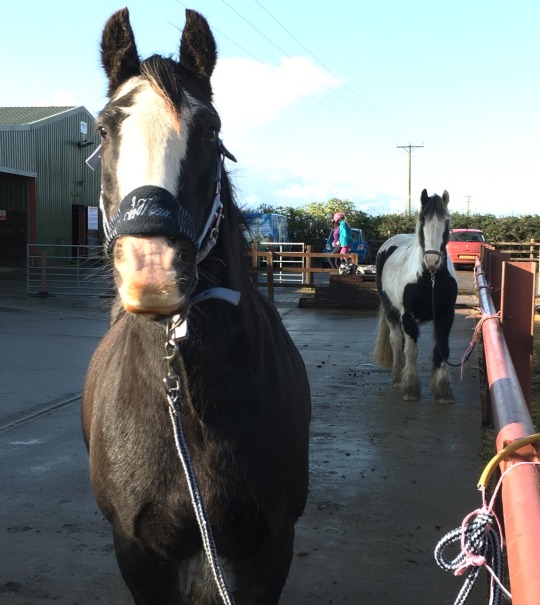
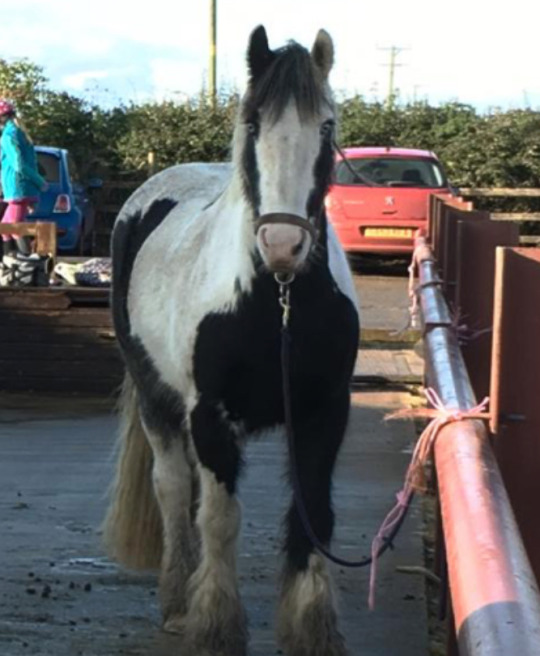
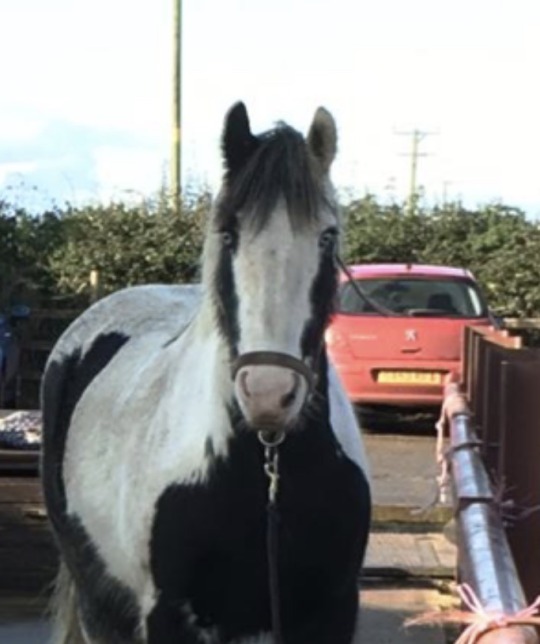

why
#horse#horses#pony#cute#fat horse#piebald#cob#black horse#black cob#piebald cob#piebald horse#not my horses but pye (black) lives with pippin
2 notes
·
View notes
Video
Megastar Foal 1week by Danni Showers
Via Flickr:
28 notes
·
View notes
Text


Father and son ❤️
0 notes
Text

Uh oh.
#horse#gypsy cob#mollycob#equine#moulting fun#all the fluff#endless#just keep grooming!#would probably be less annoying if she wasnt piebald XD
8 notes
·
View notes
Photo
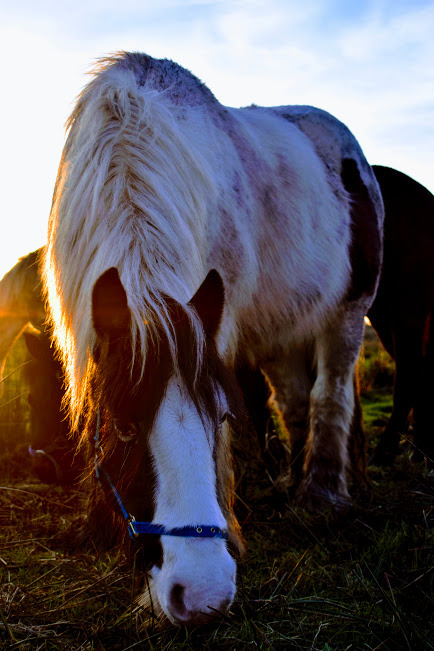
7 years together <3
1 note
·
View note